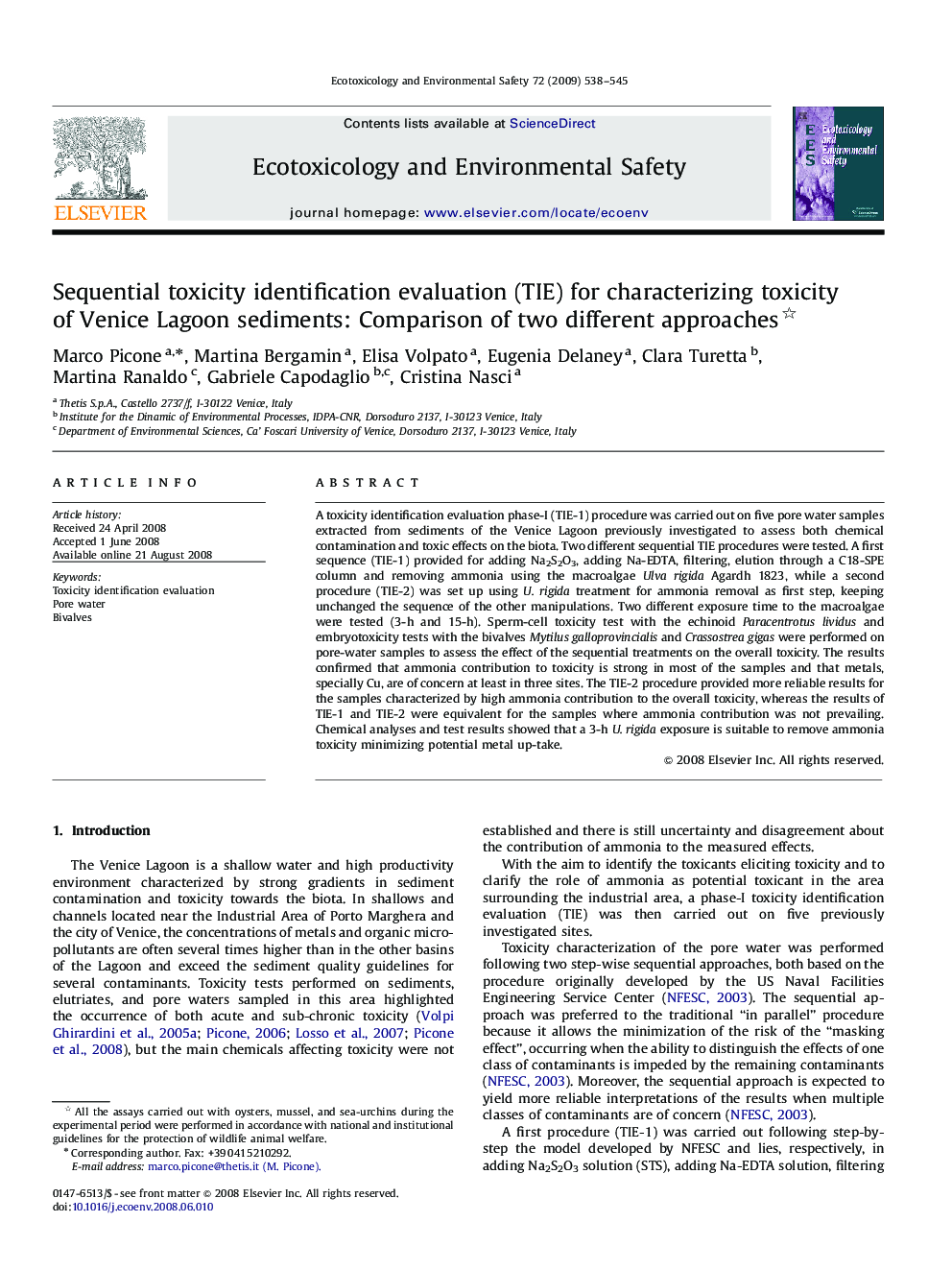| Article ID | Journal | Published Year | Pages | File Type |
|---|---|---|---|---|
| 4422017 | Ecotoxicology and Environmental Safety | 2009 | 8 Pages |
A toxicity identification evaluation phase-I (TIE-1) procedure was carried out on five pore water samples extracted from sediments of the Venice Lagoon previously investigated to assess both chemical contamination and toxic effects on the biota. Two different sequential TIE procedures were tested. A first sequence (TIE-1) provided for adding Na2S2O3, adding Na-EDTA, filtering, elution through a C18-SPE column and removing ammonia using the macroalgae Ulva rigida Agardh 1823, while a second procedure (TIE-2) was set up using U. rigida treatment for ammonia removal as first step, keeping unchanged the sequence of the other manipulations. Two different exposure time to the macroalgae were tested (3-h and 15-h). Sperm-cell toxicity test with the echinoid Paracentrotus lividus and embryotoxicity tests with the bivalves Mytilus galloprovincialis and Crassostrea gigas were performed on pore-water samples to assess the effect of the sequential treatments on the overall toxicity. The results confirmed that ammonia contribution to toxicity is strong in most of the samples and that metals, specially Cu, are of concern at least in three sites. The TIE-2 procedure provided more reliable results for the samples characterized by high ammonia contribution to the overall toxicity, whereas the results of TIE-1 and TIE-2 were equivalent for the samples where ammonia contribution was not prevailing. Chemical analyses and test results showed that a 3-h U. rigida exposure is suitable to remove ammonia toxicity minimizing potential metal up-take.
